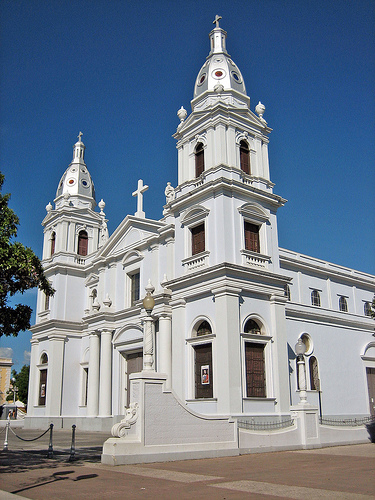Although the Supreme Court decision in Municipality of Ponce v. Roman Catholic Apostolic Church in Porto Rico, 210 U.S. 296 (1908), does not directly mention the First Amendment, it illuminates the establishment clause by casting light on matters involving church property.
Case involved whether a municipality or church owned a house of worship
The case involved a dispute in Puerto Rico, a colony the United States had acquired from Spain as a result of the Spanish-American War, over whether a municipality or the Catholic Church owned a house of worship. Lower courts found that the Puerto Rican legislative assembly had the right to confer original jurisdiction on the Supreme Court of Puerto Rico to decide such matters. The U.S. Supreme Court affirmed.
Court held that the church owned the property
Chief Justice Melville W. Fuller wrote the unanimous decision for the Court, stating that the law “recognized at the time of the cession [of Puerto Rico from Spain to the United States] the juristic personality and legal status of the [Roman Catholic] church.” Fuller proceeded to trace the history of church/state property relations from the time of the Roman Emperor Constantine through medieval and Spanish law to the present, including Justice Joseph Story’s decision in Terrett v. Taylor (1815), relative to the Episcopal Church’s ownership of glebe lands in Virginia.
Although at the time of Fuller’s decision the United States did not have diplomatic relations with the Vatican, Fuller observed that “[t]he Holy See occupies a recognized position in international law, of which the courts must take judicial notice.” He observed that “by the Spanish law, from the earliest moment of the settlement of the island to the present time, the corporate existence of the Catholic Church has been recognized.” Fuller said that the recognition of the church as a “juridical person” with “the right to acquire, possess, or transfer all kinds of properties” provided the basis for adjusting “the difficult problem incident to the transfer of sovereignty from a regime of union of church and state to the American system of complete separation.”
Citing a statement by future Supreme Court chief justice William Howard Taft as governor general of the Philippines and the Court’s decision in Late Corporation of the Church of Jesus Christ of Latter-day Saints v. United States (1890), he observed that once land was given to the church, it became the church’s. The fact that the municipality might have contributed to the building under a system where church and state were fused did not affect the church’s current title to the property.

